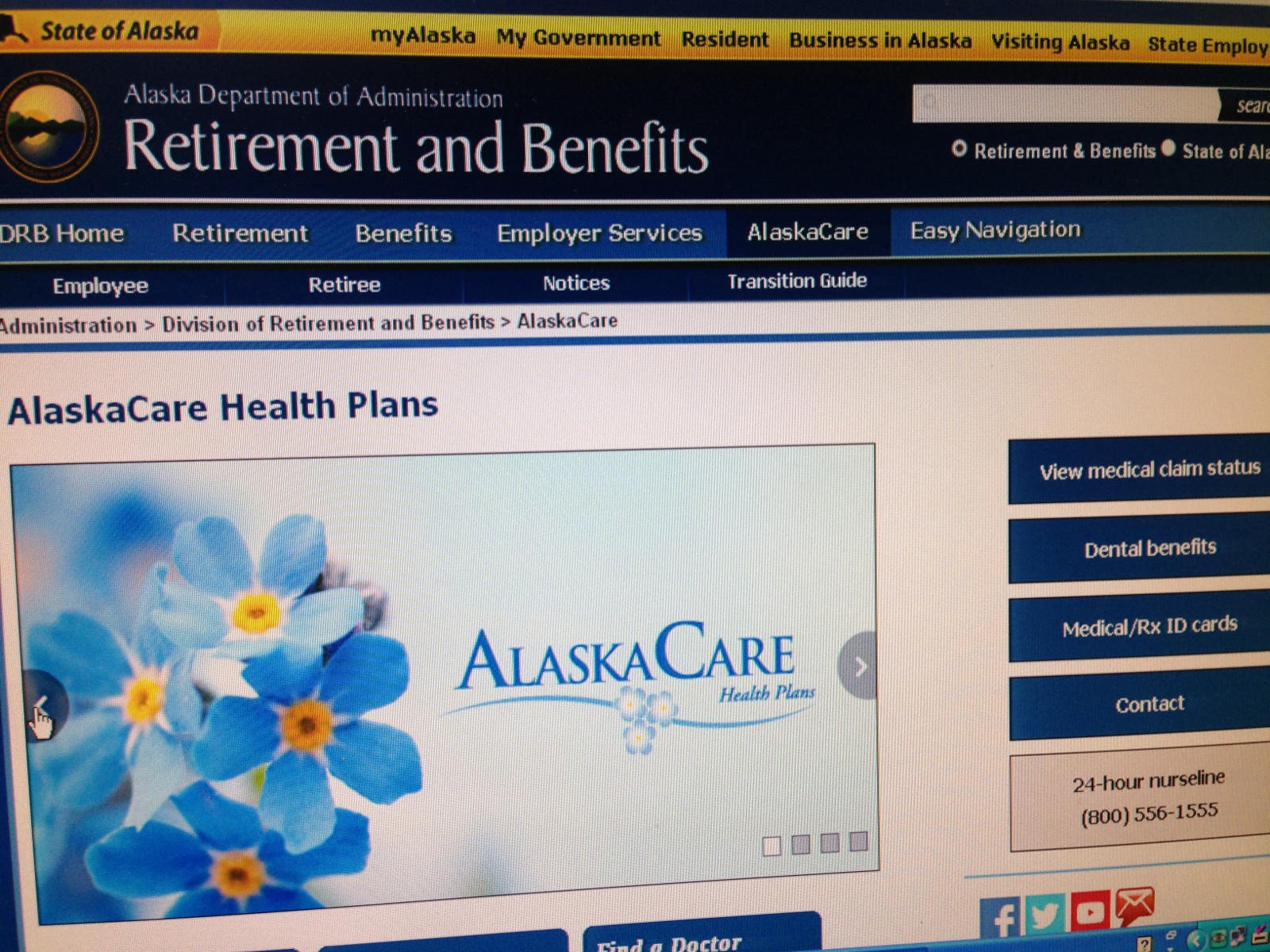
The State of Alaska is trying to clear up mass confusion over recent changes to its retiree health care plan.
State officials this week have been holding public meetings on the revisions. A meeting in Juneau is scheduled for Friday at 2 p.m. on the 10th floor of the State Office Building.
More than 84,000 people are covered by AlaskaCare plans. That includes more than 38,000 retirees and 6,600 active state workers, as well as their dependents. Most active state workers are covered by other plans.
On Jan. 1, the companies that operate the plan for the state changed from Wells Fargo/HealthSmart to Aetna and Moda Health. Just after that the Division of Retirement and Benefits and the new administrators were swamped by nearly 50,000 phone calls and emails, as plan members reported problems.
“There’s always some transition issues, but this seems to be more confusion than we’ve ever had before in my experience,” says retired University of Alaska employee Sharon Hoffbeck, who chairs a Retired Public Employees of Alaska committee dedicated to looking at health insurance benefits.
The most significant issue was Aetna’s refusal to cover medications from compounding pharmacies, which mix prescribed drugs suited to the unique needs of a patient. At first coverage was denied due to quality control problems at some compounding facilities. For now the state is telling Aetna to keep paying for those medications. A delay in mailing out benefit eligibility cards has been resolved as well.
But other problems persist. Hoffbeck says many retirees feel the plan has been changed to diminish their coverage. For instance, members are now steered to health care providers in the Aetna and Moda Health networks. Those who go to another doctor or dentist end up paying more of their own money to receive care. Moda, which is responsible for the dental portion of the plan, is new to Alaska. Hoffbeck says it does not have many providers in the state.
“They’re explaining it by saying that they’re trying to encourage dentists to come into the network,” she says. “I’m not sure what they’re thinking other than they want the retirees to try and convince their dentists to join the network, which we don’t think is our responsibility quite honestly.”
The state also revised the nearly 200-page booklet that describes plan benefits. The new version is written in legalese and is so convoluted that Retired Public Employees of Alaska hired a consultant to sort out the changes.
“The readability level of a document like this, according to the expert that we hired to do this plan comparison, should be somewhere between the fifth and eighth grade reading level,” Hoffbeck says. “This plan is easily post doctorate. It is extremely legal, extremely complex, very confusing.”
Reasons for the plan changes
State regulations require the Division of Retirement and Benefits to put the AlaskaCare plan out to bid every three to five years. Aetna previously administered the plan from 1982-1997 and again from 1999-2006.
Deputy Commissioner of Administration Mike Barnhill oversees the Division of Retirement and Benefits. He argues the basic structure of the plan hasn’t changed.
“This is a plan that provides coverage for medically necessary health care,” Barnhill says. “And the cost structure of that coverage remains the same. Retirees pay a $150 per person deductible. They have an $800 per year out of pocket maximum. And generally speaking the co-insurance – that’s the amount that the plan reimburses for the care – is 80 percent of a recognized charge.”
Barnhill says the plan will continue to pay 80 percent co-insurance for doctors’ visits and other routine care, even at facilities that aren’t part of Aetna’s network.
But he argues that steering members to in-network providers will reduce the overall cost of the plan.
“In the last three years, the retiree dental, visual, audio premiums have gone up an average of 7 percent per year,” says Barnhill. “When you’ve got what amounts to unmanaged care, meaning members can and do go to the highest cost dentist, the costs go up, and our members pay that.”
He agrees the revisions to the plan booklet are hard to read and says the state is working to make it more understandable. He defends the process, saying the booklet had not been significantly rewritten in more than a decade.
A public comment period on the changes originally scheduled to end Feb. 28 has been extended to April 30. Barnhill says about a hundred people attended a public meeting in Anchorage earlier this week, while more than 120 turned out in Fairbanks.
Lawsuit on the horizon?
The Alaska Constitution says the accrued benefits of public employee retirement systems “shall not be diminished or impaired.” Twice in state history, retirees have challenged proposed changes to their health care plan. In both cases, the Alaska Supreme Court ruled the state can reduce retiree benefits in one area as long it offsets the reductions with improvements in other areas.
“Our benefits are constitutionally protected. They can’t be diminished,” Hoffbeck says. “That doesn’t mean that they can’t be juggled.”
She says Retired Public Employees of Alaska is still reviewing all the changes to the plan, but at this point a legal challenge is “very possible.”
“I truly believe that the state is working within the parameters they feel they should be able to work. We’re disagreeing with that opinion,” Hoffbeck says.
Barnhill is a former attorney with the Department of Law. While he’d like to avoid a lawsuit, he says sometimes they are beneficial.
“Litigation can be really helpful in a variety of ways to help clarify the issues and get guidance,” Barnhill says.
In the meantime, he says the public comment period is a good opportunity for the state and retirees to talk through some of the issues and hopefully avoid going to court.